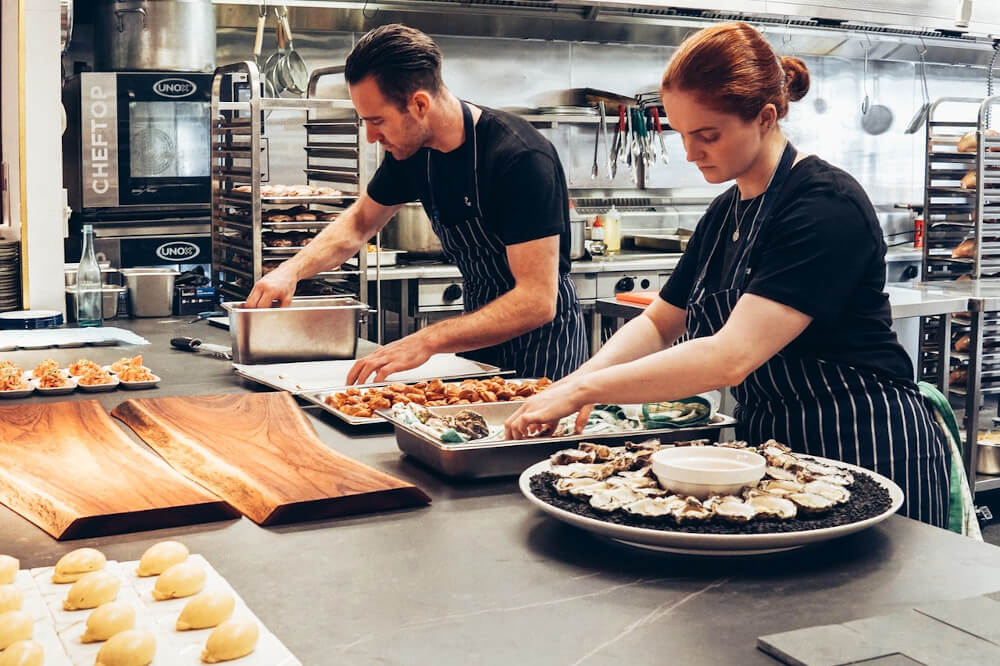It’s that time of year – springtime in Texas, a time when people want to enjoy perfect weather and get together with friends.
With fewer COVID-related restrictions in place, many people are prepared to enjoy eating meals out and bolstering the local economy.
As a restaurant owner, you’re probably excited to think about the additional traffic as well as focused on finding ways to maximize both safety for your diners and profitability for your business. However, you may be wondering how to make the best decisions for the long-term viability of your business.
We’ve put together some guidelines that may help your business as you successfully navigate the changes in the industry, the economy and consumer behavior. Use these guidelines, along with your own experience and expertise, so you can balance priorities and get back to thriving.
1. Reduce your waste.
“A penny saved is a penny earned.” That old saying still rings true for us, especially when you’re focusing on how to handle the additional costs of business that have become common this year.
Restaurant owners are reporting higher costs related to almost everything they touch:
- Food wholesalers and beverage distributors are passing on their increased costs
- More orders through third-party services, while valuable, still take a considerable bite out of the profit margin (a $3 billion increase in deliveries for the top companies in 2020, along with a 52% decrease in in-restaurant dining)
- Additional takeout orders mean purchasing and handing out large amounts of plastic cutlery, takeout boxes and more (all of which also have a negative effect on the environment)
- Restaurant workers need PPE, which adds to both expense and waste
On top of all those costs, restaurant owners still have staff wages, rent, insurance and more to cover. Anywhere there’s an opportunity for savings, it’s wise to take advantage of it.
One small way restaurant owners have been able to adjust their expenditures – and benefit the environment at the same time – is by developing sustainable composting processes instead of sending all their food waste to landfill.
95 percent of waste from restaurants [MOU1] [NT2] can be recycled or composted, which means both a reduction in roll-off dumpster and landfill fees and a reduced negative impact on the environment.
2. Work with trusted partners.
Everyone is in the same boat right now when it comes to ensuring their business remains viable. Whether you’re trying to move past COVID issues or trying to find ways to recreate your company’s landscaping after the Texas winter storm, there are plenty of other small business owners requesting the same services and doing the same brainstorming to improve their process and profits.
When you’re trying to come up with ways to make your business efforts more efficient, it makes sense to connect with providers who are offering the same services to other local businesses.
Work with teams that consult on business needs – from waste processing to customer experience to ecommerce. They’ll be able to offer useful insights based on the experiences they’ve had serving other clients and developing their best practices.
3. Make some room.
For restaurant owners wondering how to social distance your diners and maximize your profit margin, it might make sense to consider some additional construction.
If your location and your balance sheet will permit it, adding an open-air patio might give you the additional space you need to host more customers.
For an extra focus on environmental sustainability, talk with your construction manager or general contractor and ensure they’re able to make the most of the changes.
If your project involves some tear-down, ask whether supplies can be re-used or if things like parking lot concrete can be grounded and recycled rather than put into a landfill.
4. Continue staying comfortable with unpredictability.
As a restaurant owner, your world has changed multiple times over the past year and the continuing unpredictability can be maddening.
In a business that relies on perishable goods and a high-turnover workforce, you’re accustomed to dealing with change, but that doesn’t make it any less terrifying.
You’ll need to train new staff and get them up to speed, which can be frustrating for your team members learning the ropes or adapting to bigger crowds, as well as for customers whose food may come out a little slower than usual.
As a local San Antonio chef said, “we’re at 100% capacity but not yet at 100% capability.” So while you’re continuing to build back up to business-as-usual, focus on communicating thoroughly with team members and customers and setting the proper expectations.
At the same time, while adding new members to your team, it may be the best time to put new practices into place. Look for ways your new staff could do things differently and more efficiently. Some restaurants have reported finding additional ways to stretch ingredients, getting creative with dishes that use commonly wasted items or designing new compost and food waste management processes.




